How to make a small bedroom look bigger – 10 simple tips and ideas
If you're wondering how you're going to make your small bedroom look bigger, look no further. We have the answers
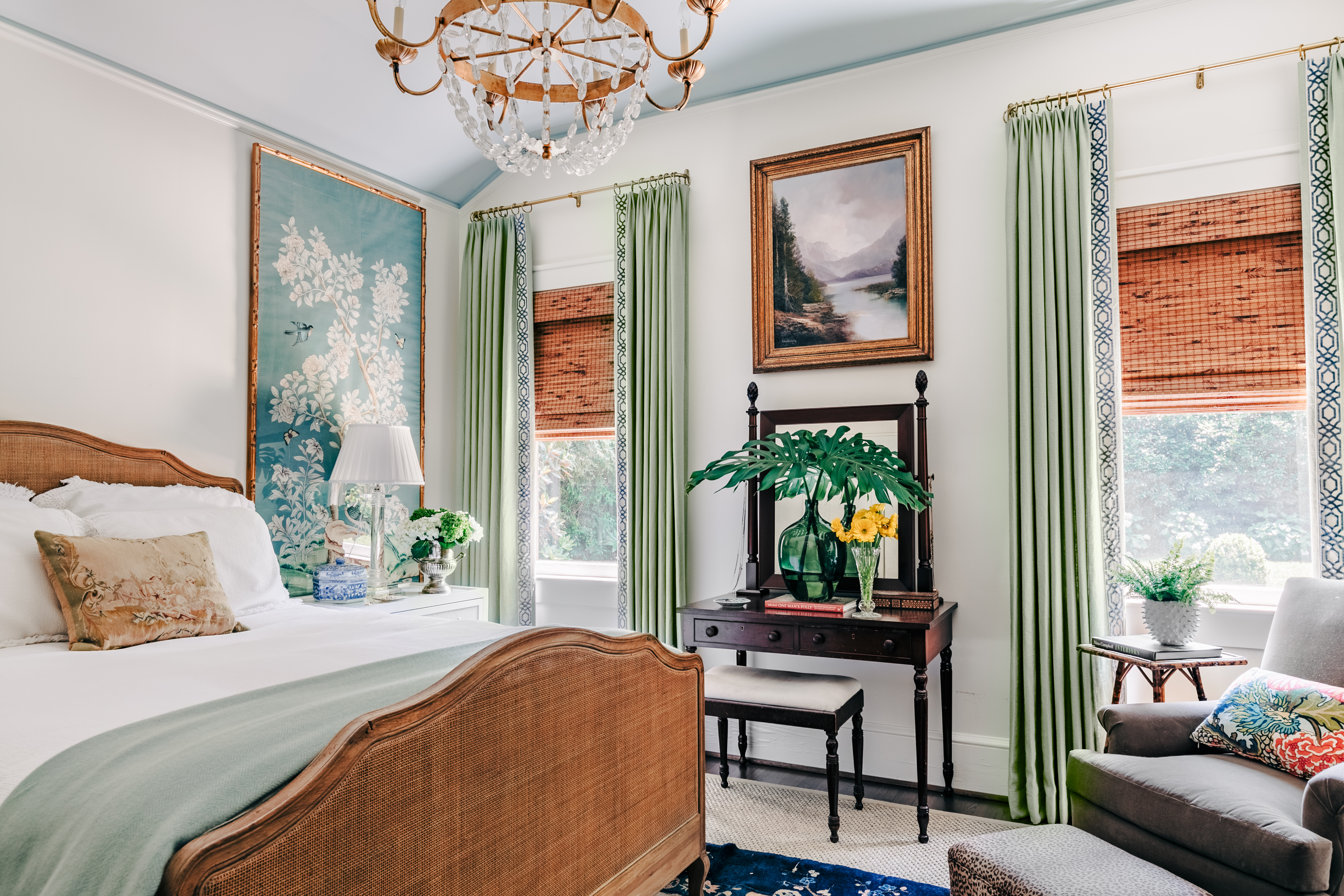
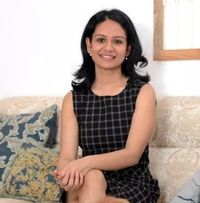
Small spacer dwellers rejoice, as we are here with all the best tips on how to make a small bedroom look bigger. We are firm believers that having minimal square footage shouldn't hold you back when it comes to designing a beautiful space.
If there's one space you truly feel the crunch in, it is the bedroom – this is where you spend most of your time. If the room isn't one hundred percent comfortable, it can disrupt your mental peace. Sure, small bedrooms create less user hassle when it comes to cleaning, but due to their size, it gets messy easily, and finding the space for storage can be tricky.
Before you jump into designing this very important room, remember, clutter is your biggest enemy. Free the room of knick-knacks and miscellaneous accessories and the perception of space will increase. Ensure your clothes, pencils and socks are always in drawers. Keep the shoes in racks and make sure the room is always neat.
There are, of course, several other ways to boost space in terms of area, light, and functionality, all without having to call in the builders. Take a look at our expert-approved small bedroom ideas.
1. Wall mount as much as you can to clear floor space
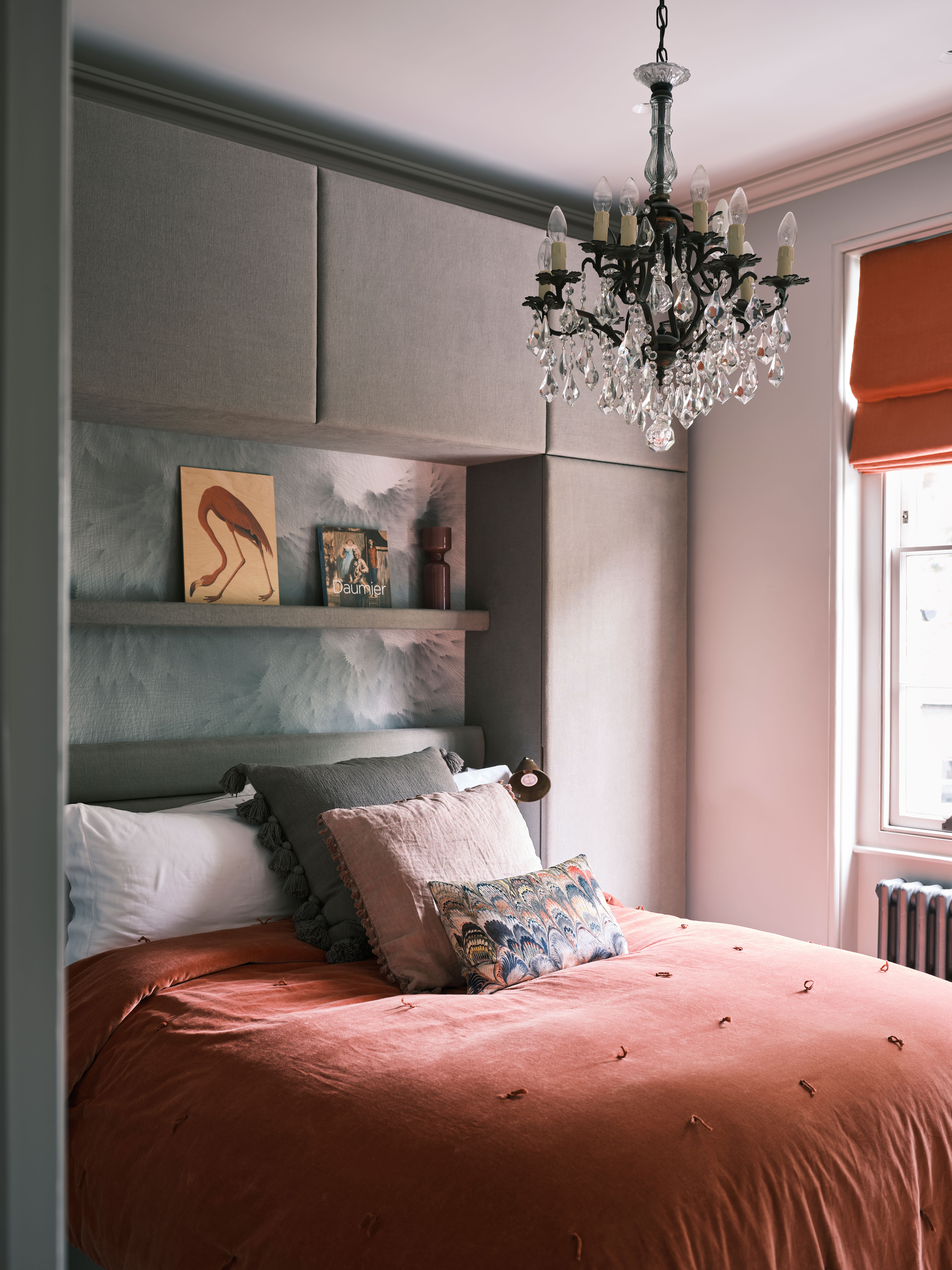
Keep the floor clear of all items, boxes, furniture, and drawers. Because when you have more floor area, your sightlines across the room don't get interrupted, thereby making the space seem larger than it is. For small bedroom storage ideas, consider mounting everything on the walls, and if possible, opt for built-in shelves.
'Your bed can have storage drawers that eliminate other furniture that takes up floor space. You can attach floating nightstands to walls so that you visually create space and have a better energy flow. If you don't opt for storage under the bed, use a bed frame that has legs so you can see under the bed. The more open floor space, the larger the room will feel,' offers Jennifer Davis of Davis Interiors.
Other than storage, also mount lights. Swap standing lamps for wall sconces and pendants. Ensure you take in as much natural light as possible during the day by keeping the windows open.
'I think it's important that a small room is well-appointed. Space used efficiently naturally feels bigger. For example, I often mount bedside lights to create more surface space on nightstands and build in custom furniture like wardrobes, daybeds, and bookshelves. Small spaces also allow you to create a jewel-box experience with elements like wallpaper and unique carpets and rugs," Zoë Feldman, founder and principal designer, Zoe Feldman Design comments.
2. Use paint and wallpapers to exaggerate the height
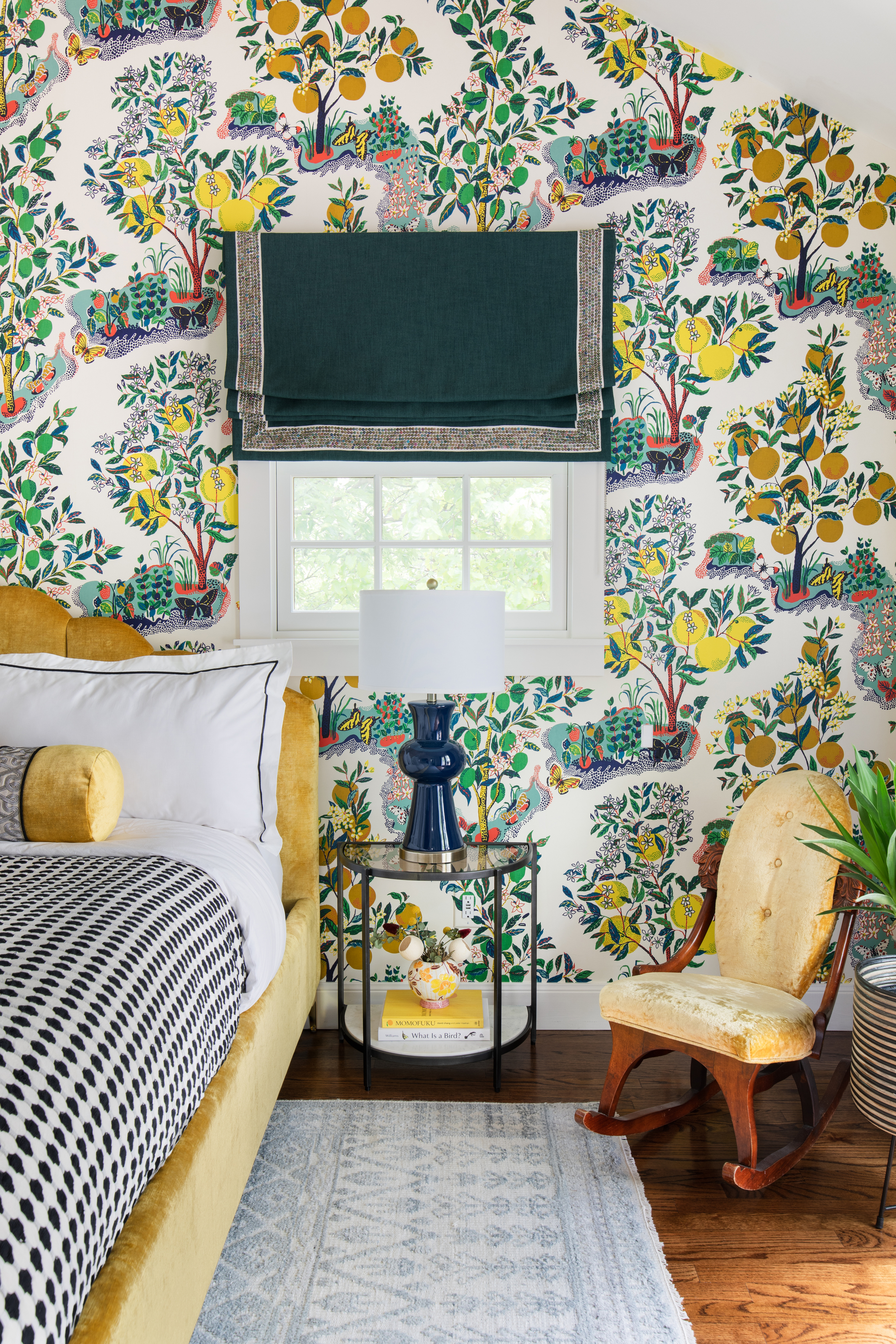
You'll be surprised at how useful bedroom paint colors and wallpapers can be in small spaces. A bedroom wallpaper or a paint, when taken up, along the length of a room, right to the ceiling can do a great deal in making the space seem larger. 'You could try painting everything in the room – the trim, the doors, the built-ins the same color as the walls to create more space visually. Painting or wallpapering the ceiling in a lighter color than the walls is another trick we use. It draws the eyes up and creates more space visually,' adds Jennifer.
Ideally, when it comes to choosing the best colors for small bedrooms, lighter tones work better than darker ones. That's because light colors reflect light and make a space seem bigger. 'The darker the paint, the smaller the room is going to feel. Take a minimalistic approach to furniture and accessories; the more pieces you put in a room, the smaller it's going to feel,' shares Stephanie Lindsey of Etch Design Group.
If you're not particularly keen on paints or wallpapers, there are other ways to draw the eyes up. 'Introduce tall items that go up to the ceiling and make the space feel bigger. Drapery, tall bookshelves, a tall plant are great options,' says Lina Galvao, Curated Nest Interiors.
3. Go for a mild color scheme
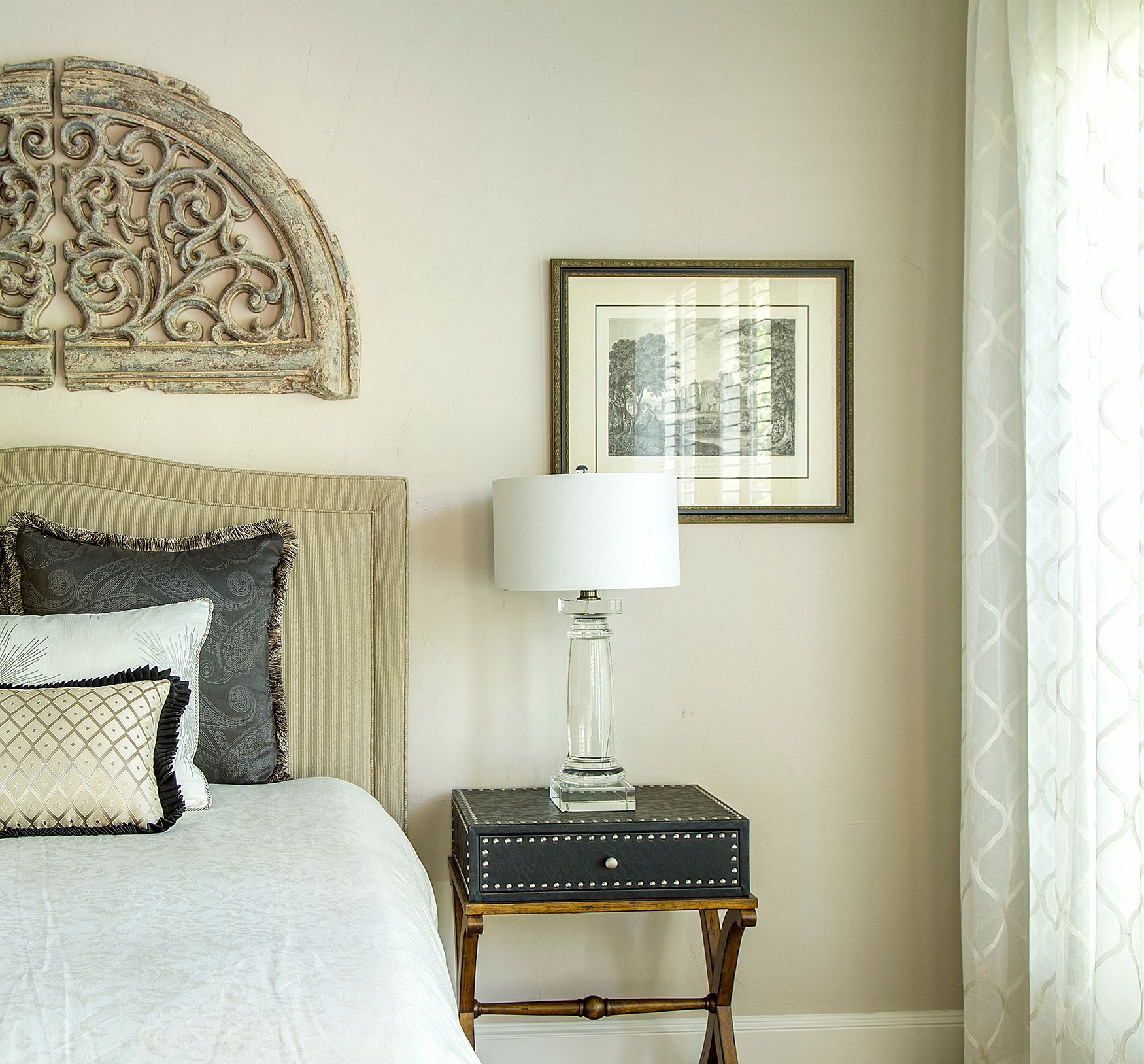
In smaller spaces, choosing the right paint for your walls can be tricky. Therefore, it's always wise to stick to a lighter color palette like a neutral bedroom scheme and add pops of hues like muted pinks, pale blues, and sage greens. Choose more frosty hues as those have a more space-expanding effect than warmer tones.
Senior designer, Ayca Stiffel of By Design Interiors also suggests colors such as cream, white, beige. 'This will make objects and your surroundings feel bigger within the space. You can add layers with a variety of materials and textures, such as bedding, pillows and wallcoverings for added dimension. This will add interest and distract from the smaller space.
We also suggest avoiding different colors on baseboards, crown molding and/or wainscoting. A contrasting color or darker stained wood will break up the room and make it feel even smaller! It's best to keep a consistent color throughout the room.'
While deciding the color scheme, also remember to coordinate your decorations throughout the room. Grouping similar-toned books, curios, to art and fabrics will create coherence, which is a necessity in a small room.
'I like to paint the walls white and paint the ceiling a darker color like emerald, navy or pink so that you can have something surprising in this little space,' says Stephanie Andrews, Founder, Balance Design.
4. Use proportionate and slender furniture
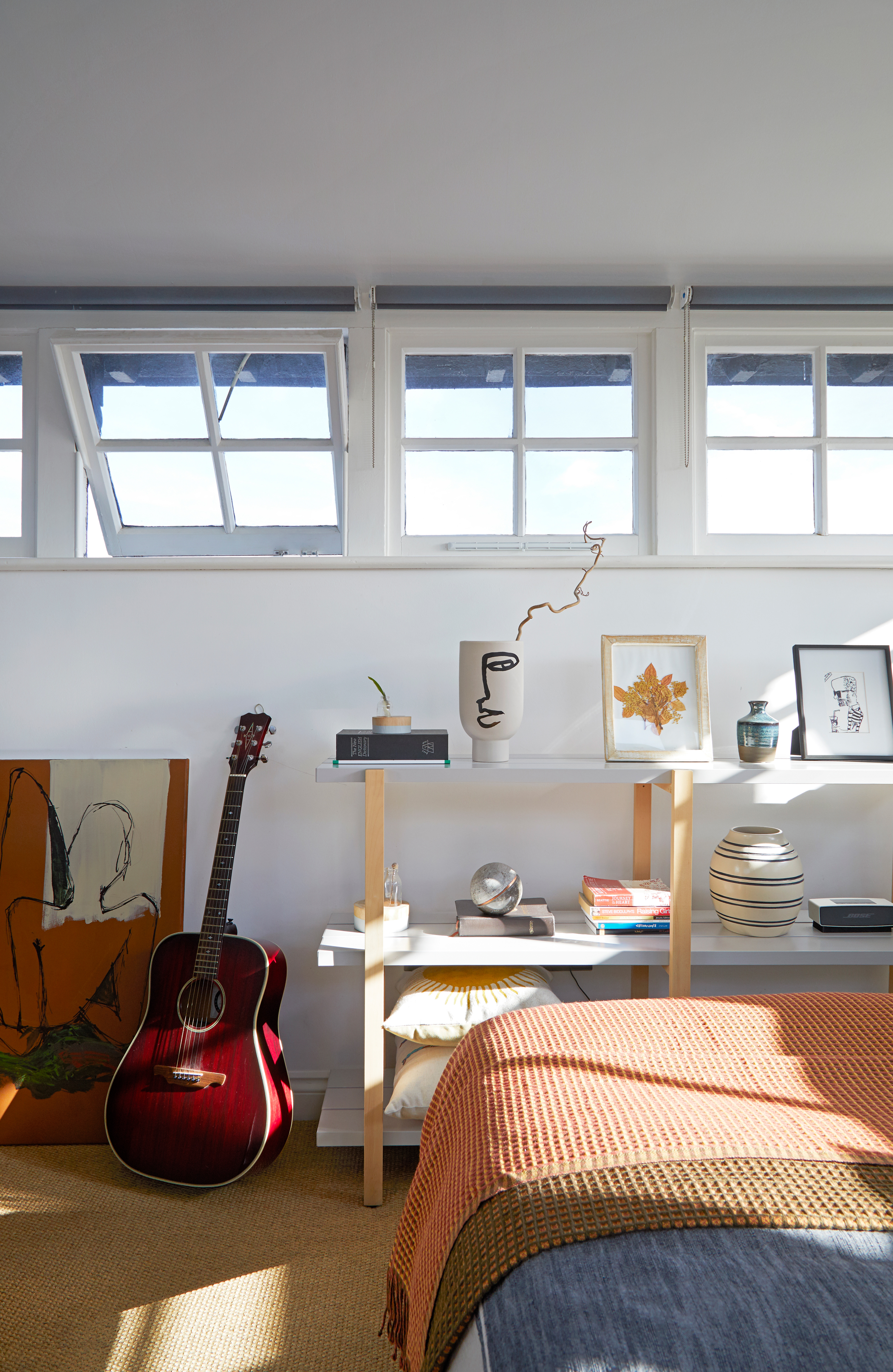
In a small bedroom, the foremost approach to designing should be – do I need this? Keeping the space minimal, with as less clutter and furniture pieces is ideal. This will allow your space to breathe and for you to have a good, peaceful sleep.
Scale and proportion are also are important while designing a space. In small bedrooms, pick furniture pieces that don't overwhelm. 'Downsize! Make sure your furniture is on the right scale for your space. You want to avoid bulky or heavy pieces that will take up a lot of physical and visual space,' Lina Galvao from Curated Nest Interiors advises.
To get the most out of small bedrooms, opt for slender designs like the bed pictured above. The thin, pointy posters make the bed seem taller, and the space larger. Thinner pieces of furniture also offer more walking space in the bedroom. Ayca recommends sourcing smaller furniture pieces such as queen-sized beds versus a king or selecting smaller nightstands. 'The smaller pieces will let you move throughout the room easier and won’t overpower the small space. It also allows for more room to add in art, a side chair, desk or whatever else is needed for the function of the room.'
Another important point to think about is the vertical and horizontal lines of your small bedroom layout. If your room features plenty of vertical lines and patterns, but the lines are ever so often broken by horizontal lines, the flow of the room become confusing, making the room feel smaller. A good way to create an even grid in your room is to choose vertical or horizontal with as little mix up between the two.
5. Get innovative with window dressings
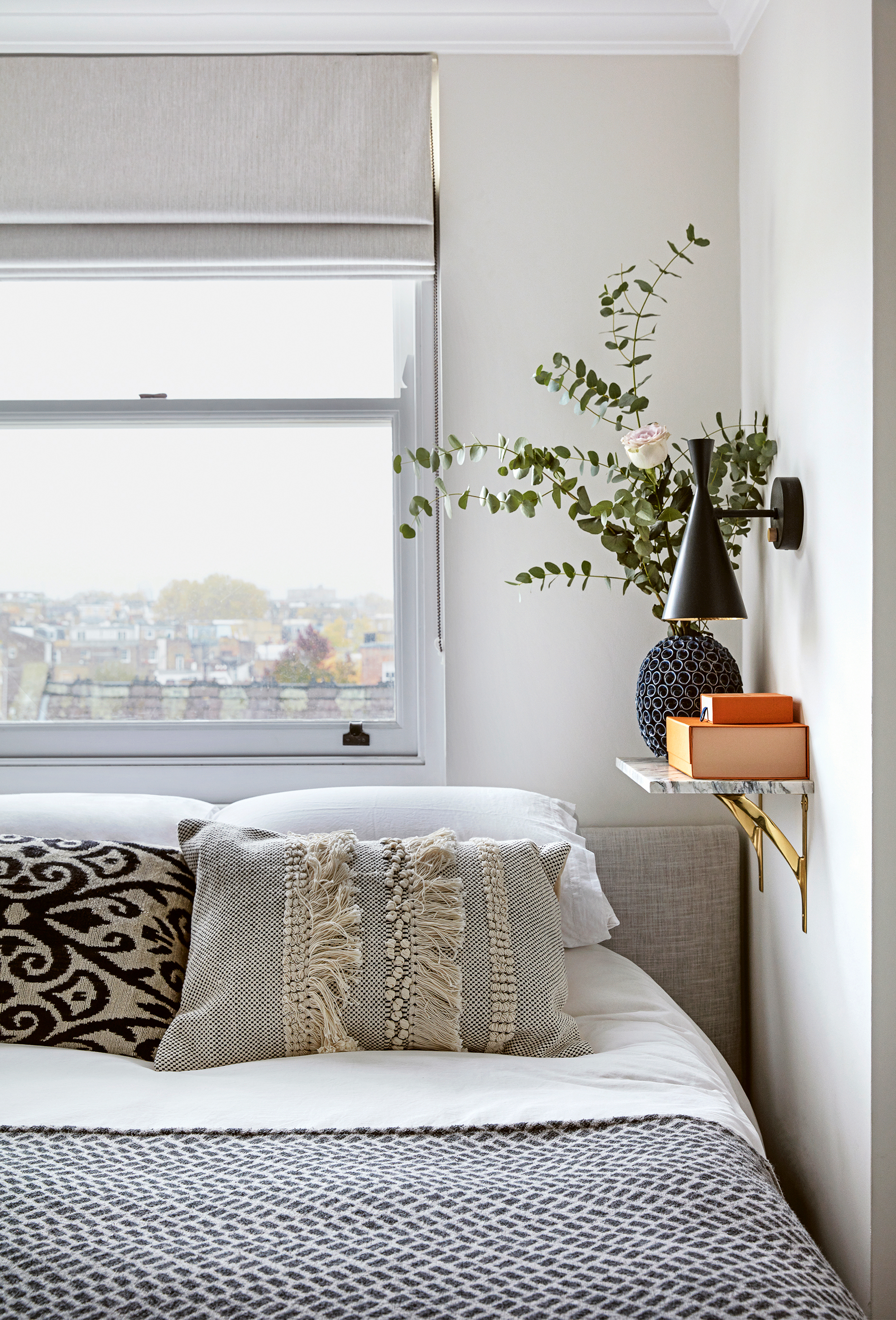
Sunlight not only brightens things up but also makes the space seem more cheerful and open. So, in a small bedroom, blackout curtains or heavy drapery is a no-no. 'Bringing in more light is always a great way to make a room feel more spacious. Make sure your window treatments aren't covering part of your window (in fact, mount drapery as close to the ceiling as possible) and get a nice overhead light. Stick with light colors and less bold patterns,' says Lina suggests.
For more stylish ideas for bedroom windows, consider shutters as they work great for when you want to entirely close or open the window. Jenni Warsitz, often uses roman shades as a fun alternative to the standard drapery panels. She says 'Roman shades are always a great alternative to curtain panels. You can dress up the design with added trims, pleats, or a fun fabric to make them unique to the room. They can also be streamlined, clean, and simple if needed. Also, I love utilizing woven wood shades. They add a natural element to the room that can soften the space.'
If you love your drapes and can't do without them, one simple tip to keep in mind is – don't let your drapes run to the floor because it cuts off the flow of the room, and adds to the visual clutter of the floor. A great idea is to tie them up or hang them a few inches above.
6. Keep things low to the floor
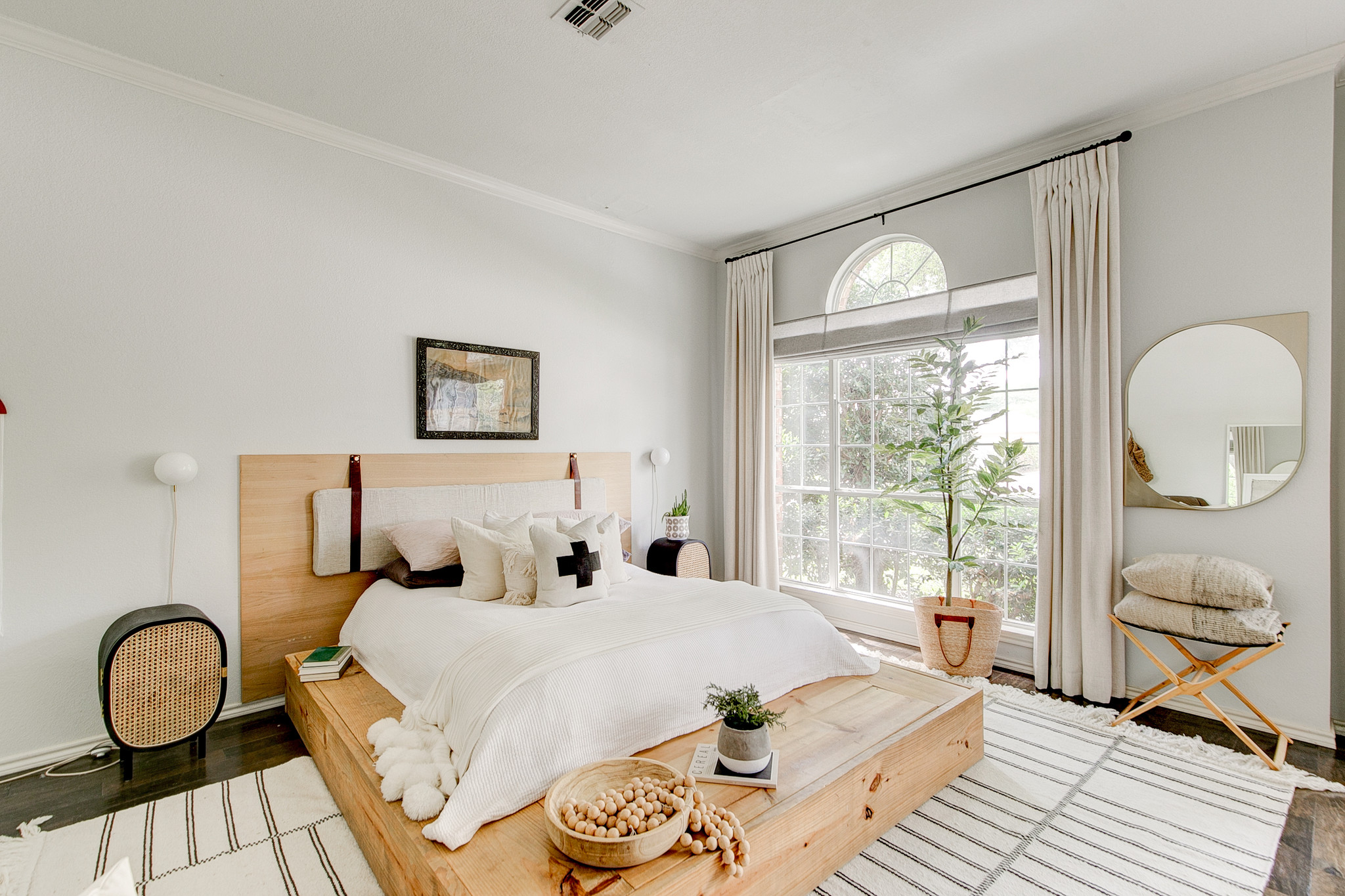
For an effective small bedroom layout, make sure everything is either at or below eye level. Get rid of a high headboard, tall chairs, and bar stools. When you opt for low furniture, you leave a lot of the space above empty, which keeps the walls cleaner and makes the ceiling seem higher. Consider a floor bed with a small bedside lamp, to create an even bigger boost in the room's visuals.
'Keep the floor free of furniture mass. Keep everything low to the ground, so that you notice the space above the bed and nightstands. All in one platform beds with nightstands built take up very little space, can be fun and stylish,' says Stephanie Andrews.
Also, consider multipurpose pieces of furniture that offer more functionality than one. A sofa-cum-bed can help a great deal. Folding desks and hidden bedroom storage pieces are a good way to go as well.
For more innovative, space-saving, you could swap your regular furniture for transparent pieces, made of recycled plastic or glass. While these pieces may take up the same amount of space, they trick the eye in to feeling they do not.
7. Use mirrors for boosting space
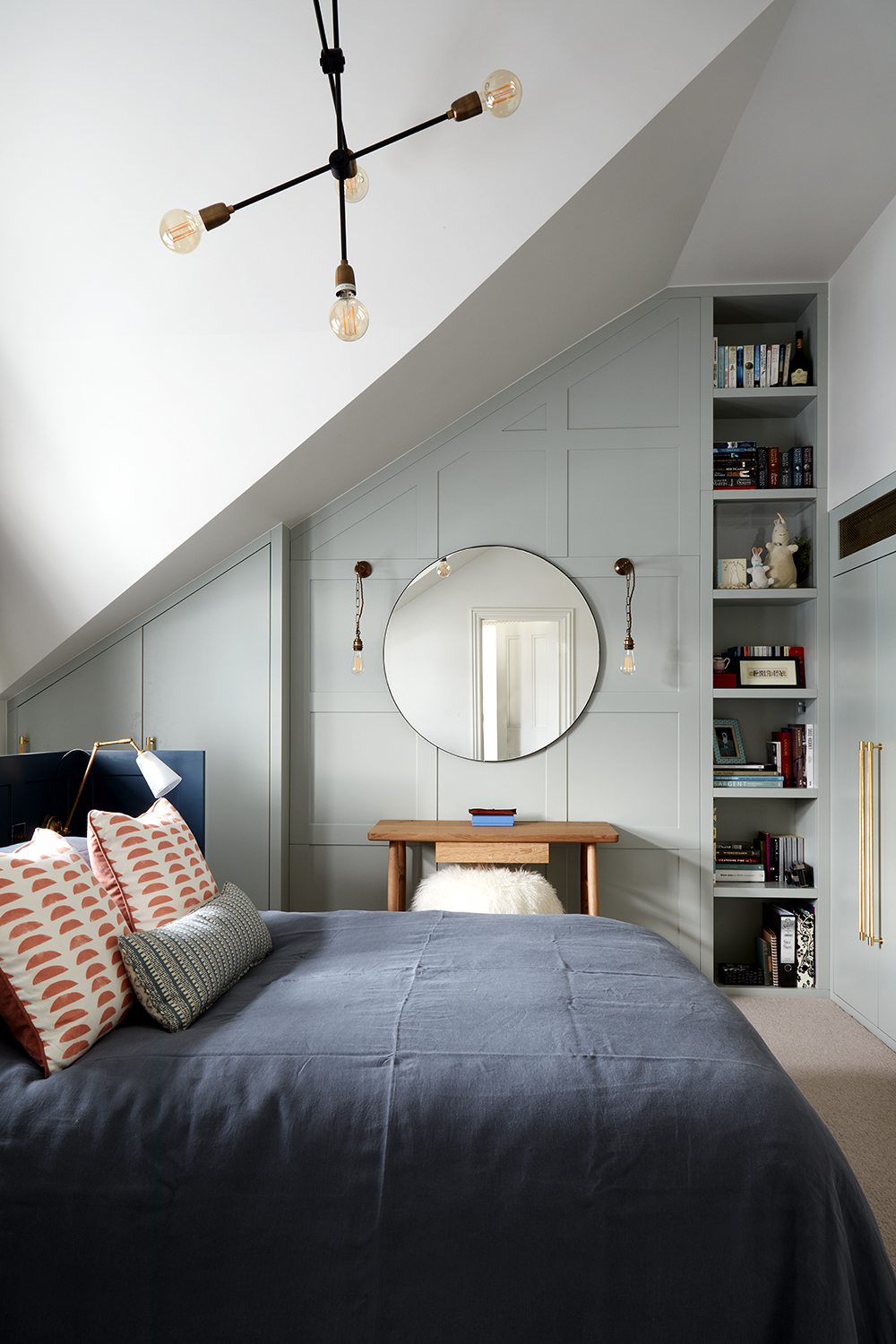
Mirrors are essential to small spaces as they reflect the light around the room, look decorative in any space, are highly functional, and also create the illusion of extended space. Consider hanging or placing oversized wall mirrors on the darkest corner of your room, and see how it helps light up the area.
Ideally, in a tiny space, choose mirrors that go from floor to ceiling. If you don't want to bring in an extra piece of furniture in your room, consider mirrored closet doors. Choose other mirrored surfaces as well, like reflective decor pieces and glass tables.
8. Add an area rug to zone the room
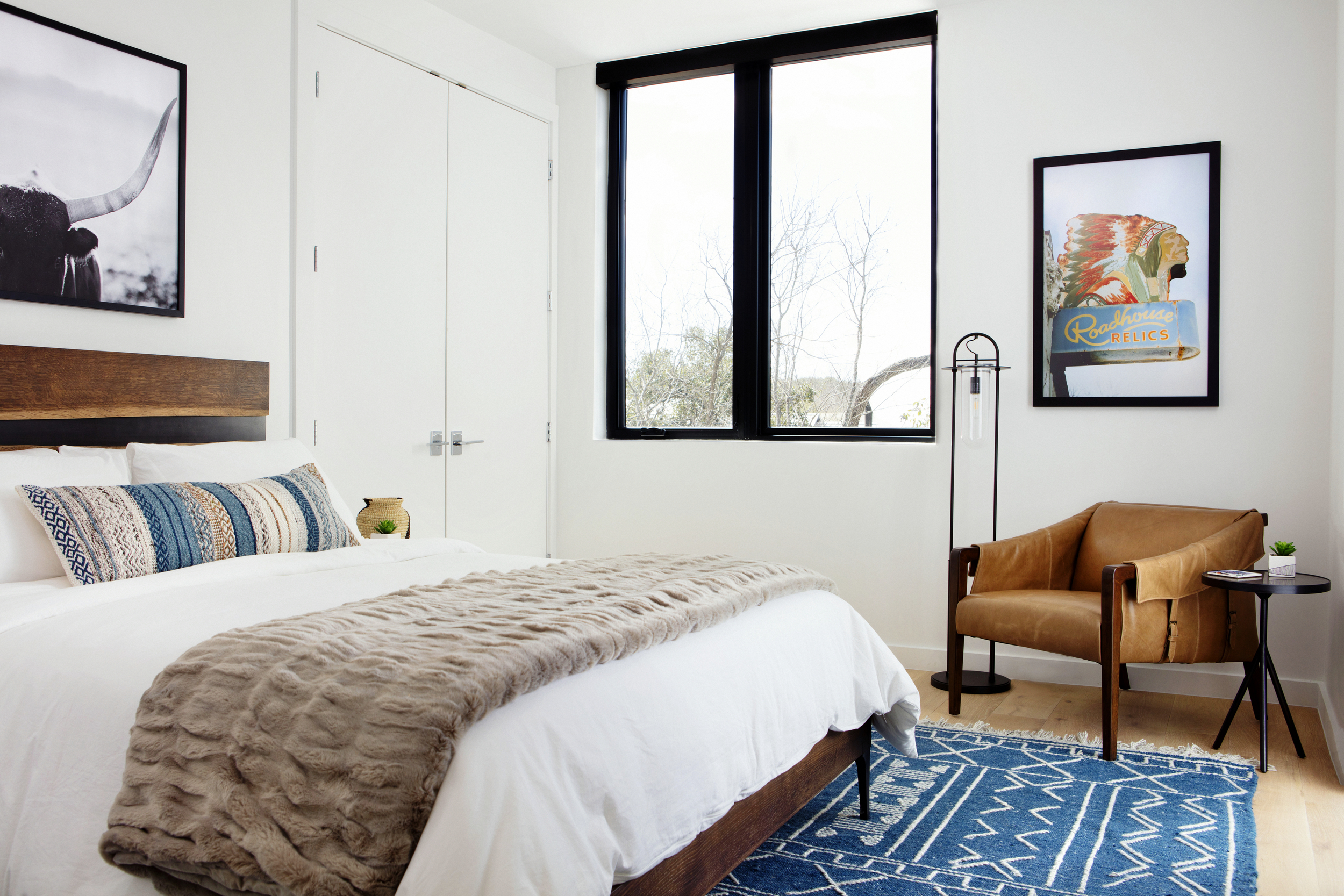
Rugs and carpets are usually an afterthought. But you'll be surprised how useful they can be, especially in a small bedroom. A rug, when placed next to the bed can create the illusion of larger dimensions because a larger rug will draws the eyes around the width of the room. It also helps in layering, thereby making a room seem more voluminous.
Ensure you leave around three inches of the floor on either sides of the rug. And place the bed or the table on top of the rug too - you want the rug to take space but not too much. 'If you have hardwood floors make sure you have an appropriately sized rug. If the rug is too small that will throw the balance off and make the bed feel too large for the space,' says Jennifer avers.
For more bedroom carpet ideas, consider ones made with natural fiber, neutral tones, and if possible, try to blend the carpet with the walls, for a unified color scheme.
9. Bring in plenty of light sources

Nothing makes a bedroom feel cramped like poor lighting so go all the way and bring in as much illumination as possible. And there's no better lighting than sunlight – it is the elixir for a small bedroom. Keep the windows open during the day to welcome in this free source of lighting. Cover the window up in the evening with either tinted glass or jute blinds so you can make the most of the filtered moonlight in the room.
For small bedroom lighting ideas, go for a wall-mounted sidelights, an overhead light for the whole room, and a few lamps dotted around to create a lovely glow. If you don't want the bother of too many fixtures, then two wall scones and a pendant or chandelier should be enough too.
10. Create an alcove for illusion of more space

If you have an alcove in your room, don't look at it as an awkward space – use it as an opportunity. Utilize the space to increase functionality in your room. Create a seating space (as seen in the picture above), for alcove shelving, place a dresser inside or create a study here.
You can also use this space to add a splash of color, which you wouldn't have done in your bedroom otherwise. Paint or wallpaper the wall to create an accent feature. Style the space with a unique floor lamp to draw attention around the space.
What color makes a small bedroom look bigger?
Colors can go a long way in influencing the look, height, and scale of a room. They can create an optical illusion and trick the eye into believing what's not there. Light tones are more reflective, and can make a space feel open and airy; these also maximize the natural light’s effect. Darker tones on the other hand absorb light and make a room feel more cocooned and warmer.
In small bedrooms, it's best to choose whites, off-whites, creams, light blues, and greens as these can make the room not only look bright but also add a little cheer to the setting. You could consider painting your walls and ceiling the same color to make the eyes travel along the length of the room, thereby creating an illusion of extended space.
How to make a small bedroom feel airy?
There are several factors that go into making a bedroom feel airy. The biggest element is light. Natural light with the combination of several indoor fixtures can make a bedroom seem open, large, and spacious. You could also use the magic of paints – choose light colors that reflect light, thereby making the room seem bigger. Mirrors play a key role in creating the illusion of space, and help bounce light around the room.
Keeping the room clutter-free is of prime importance. Small, sleek and even transparent pieces of furniture can further increase the visual volume of a space. In small bedrooms, every piece should work hard to earn its place in the room. So multipurpose furniture, say a bunk bed, a folding table, a sofa-cum-bed, mirror with a cabinet inside, etc all help increase storage and keep the room free of mess.
The Livingetc newsletters are your inside source for what’s shaping interiors now - and what’s next. Discover trend forecasts, smart style ideas, and curated shopping inspiration that brings design to life. Subscribe today and stay ahead of the curve.

Aditi Sharma Maheshwari started her career at The Address (The Times of India), a tabloid on interiors and art. She wrote profiles of Indian artists, designers, and architects, and covered inspiring houses and commercial properties. After four years, she moved to ELLE DECOR as a senior features writer, where she contributed to the magazine and website, and also worked alongside the events team on India Design ID — the brand’s 10-day, annual design show. She wrote across topics: from designer interviews, and house tours, to new product launches, shopping pages, and reviews. After three years, she was hired as the senior editor at Houzz. The website content focused on practical advice on decorating the home and making design feel more approachable. She created fresh series on budget buys, design hacks, and DIYs, all backed with expert advice. Equipped with sizable knowledge of the industry and with a good network, she moved to Architectural Digest (Conde Nast) as the digital editor. The publication's focus was on high-end design, and her content highlighted A-listers, starchitects, and high-concept products, all customized for an audience that loves and invests in luxury. After a two-year stint, she moved to the UK and was hired at Livingetc as a design editor. She now freelances for a variety of interiors publications.